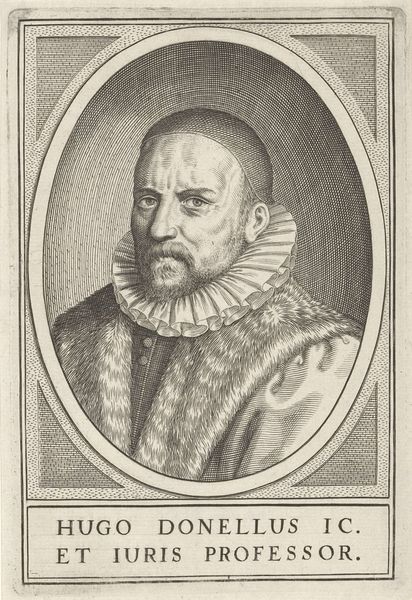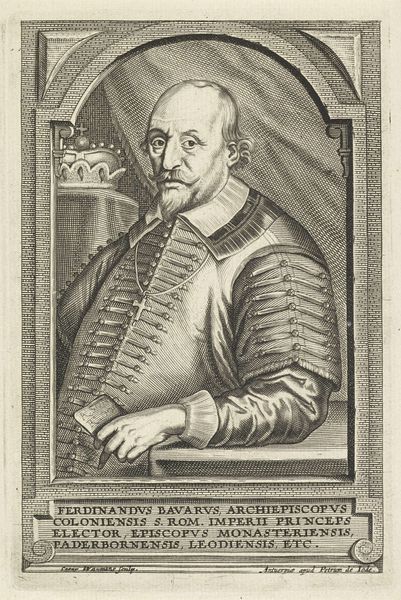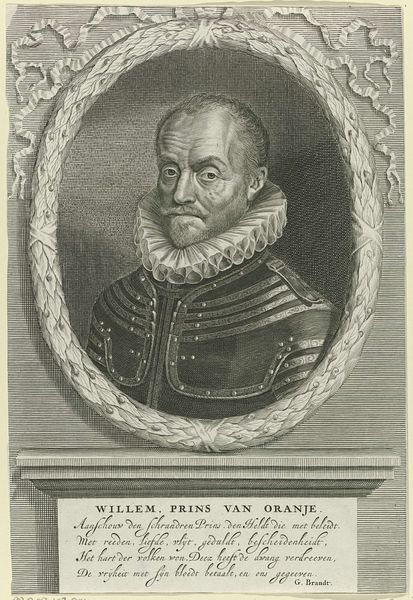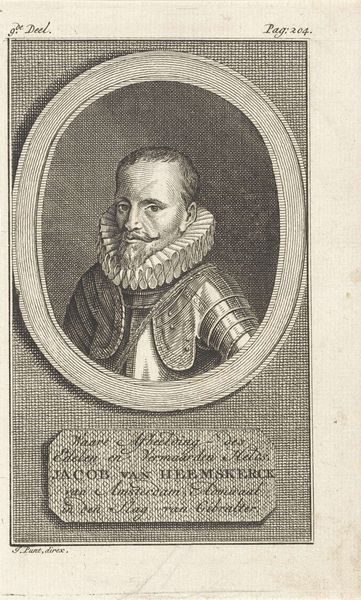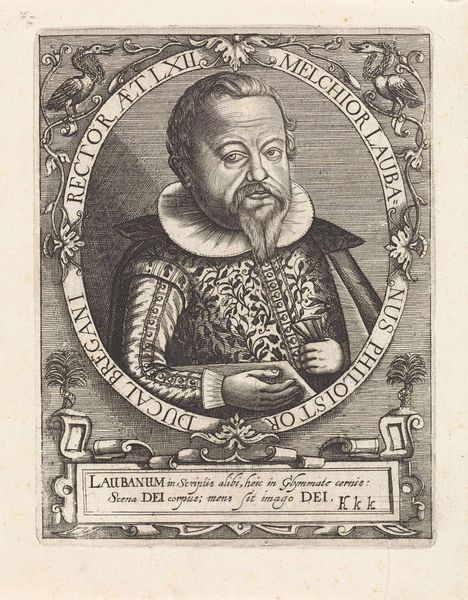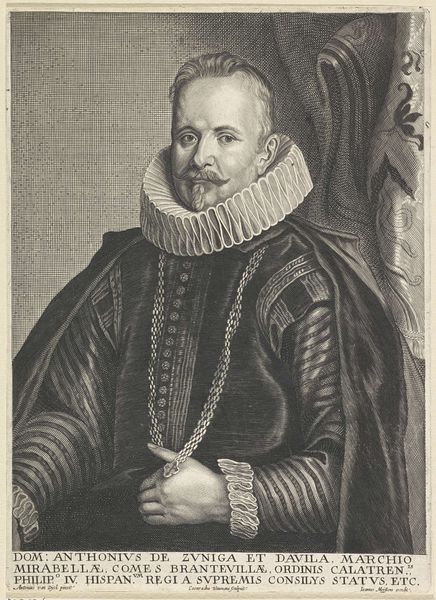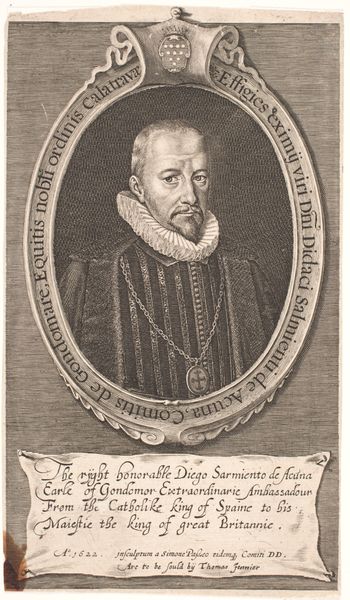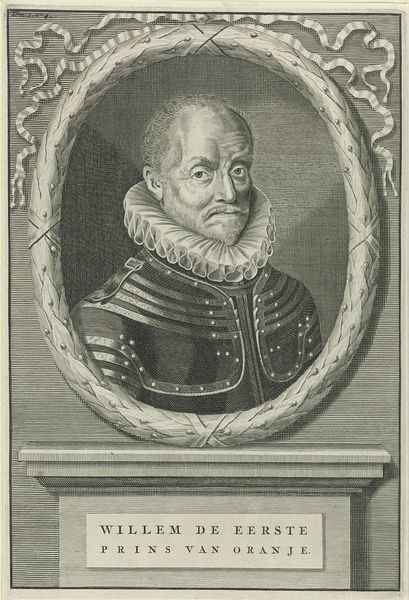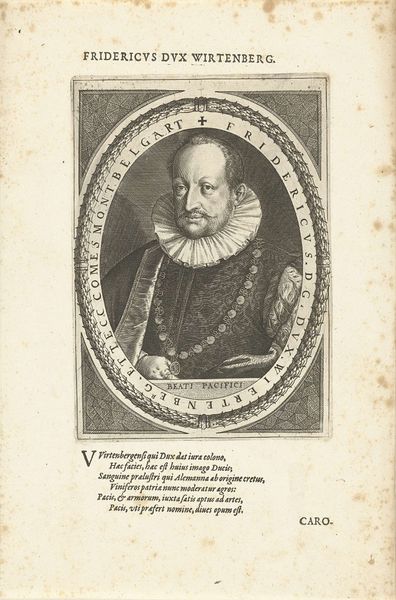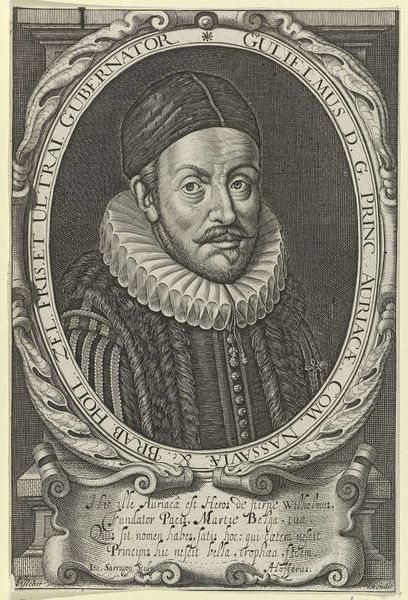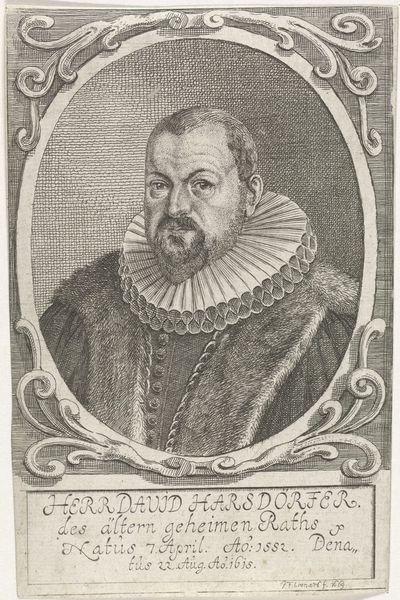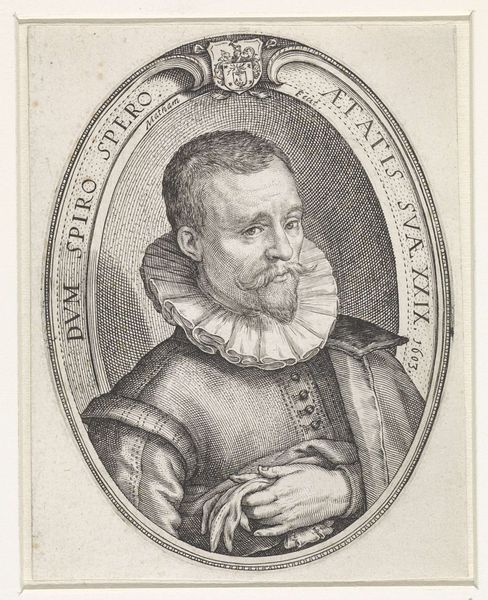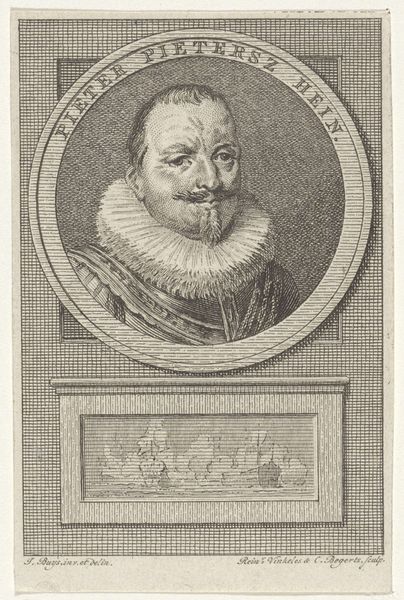
print, paper, engraving
#
portrait
#
baroque
#
dutch-golden-age
# print
#
old engraving style
#
figuration
#
paper
#
line
#
engraving
Dimensions: height 154 mm, width 102 mm, height 285 mm, width 177 mm
Copyright: Rijks Museum: Open Domain
Editor: Here we have Willem van Swanenburg's "Portret van Hugo Donellus," an engraving from sometime between 1609 and 1720. It’s striking how much detail he manages to get with just lines. What specifically draws your eye when you look at this print? Curator: I am immediately drawn to the use of line to create texture and form. Observe the density of the hatching around the face and fur collar versus the relatively sparse treatment of the background. What effect do you think this contrast has on the viewer? Editor: I guess it really emphasizes Donellus himself, making him pop out from the background. But there’s also a frame within a frame – the ornate border surrounding the oval portrait. How does that contribute to the overall composition? Curator: Precisely. The frames introduce a sense of depth and enclosure. And note how the engraver uses different densities of lines in each layer, differentiating the pictorial space, foregrounding the subject in ways that lend the subject authority. Consider, too, the placement of the text banner. How does its presence affect our understanding of the overall design? Editor: It almost feels like a label, confirming his identity and profession. The baroque ornamentation, like the foliage and scrollwork, seems balanced, not too distracting. I initially missed the tiny Latin inscription near the bottom. It looks like the publisher information. Curator: Indeed. It gives us vital information about the print's production and dissemination. Its deliberate inclusion by Swanenburg indicates that prints, like painting, are works negotiated through the various formal and material supports and means by which we understand a work of art. Editor: It’s amazing to consider how much we can learn just by focusing on the lines, composition, and framing of the image itself. I’ll definitely look at prints with a different perspective now. Curator: It's through this close attention to form that we begin to unlock a richer appreciation of artistic intent and its overall aesthetic achievement.
Comments
No comments
Be the first to comment and join the conversation on the ultimate creative platform.
